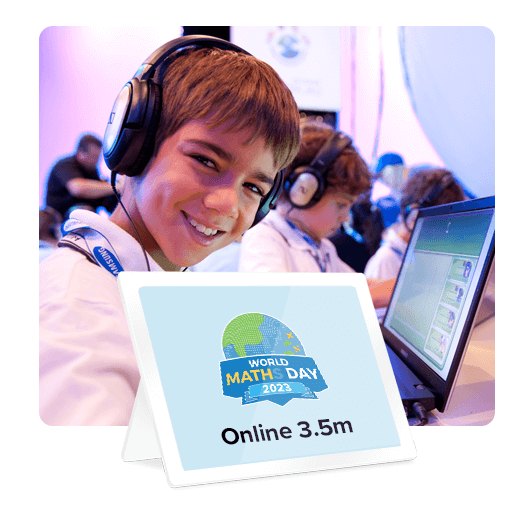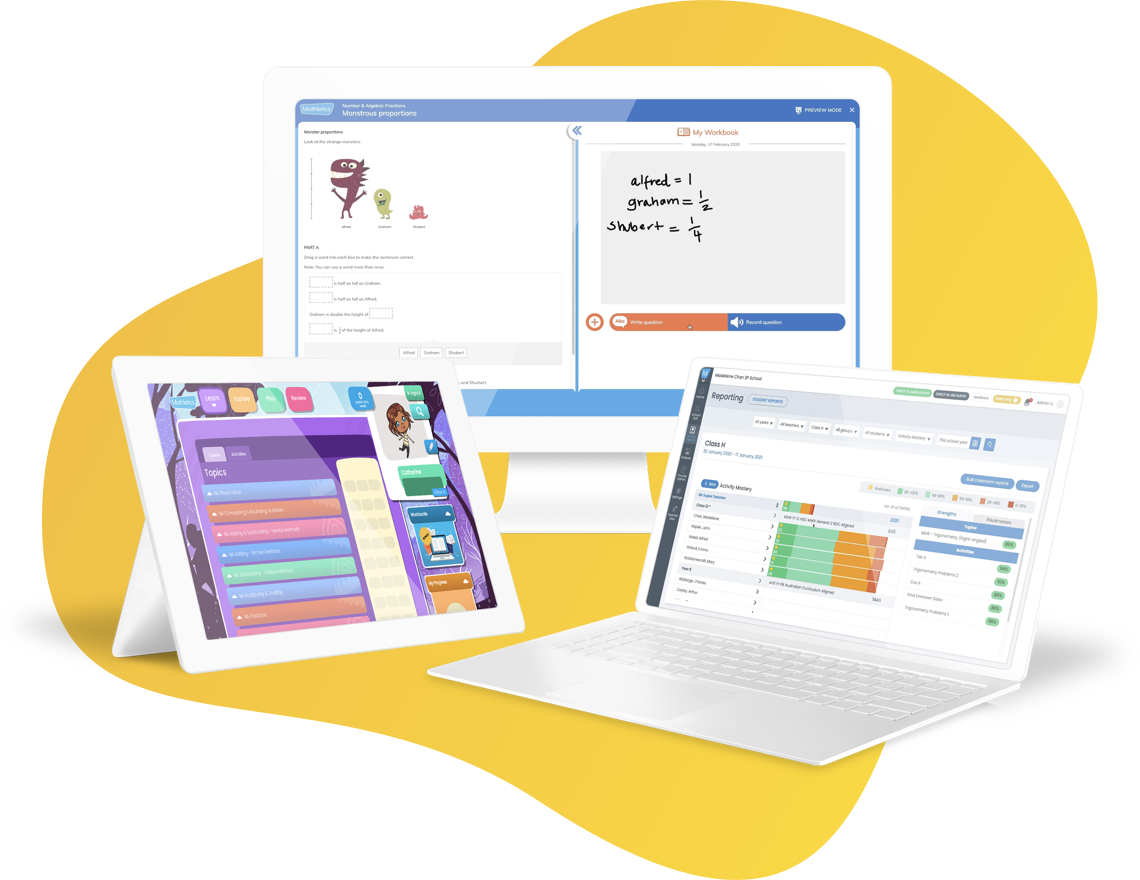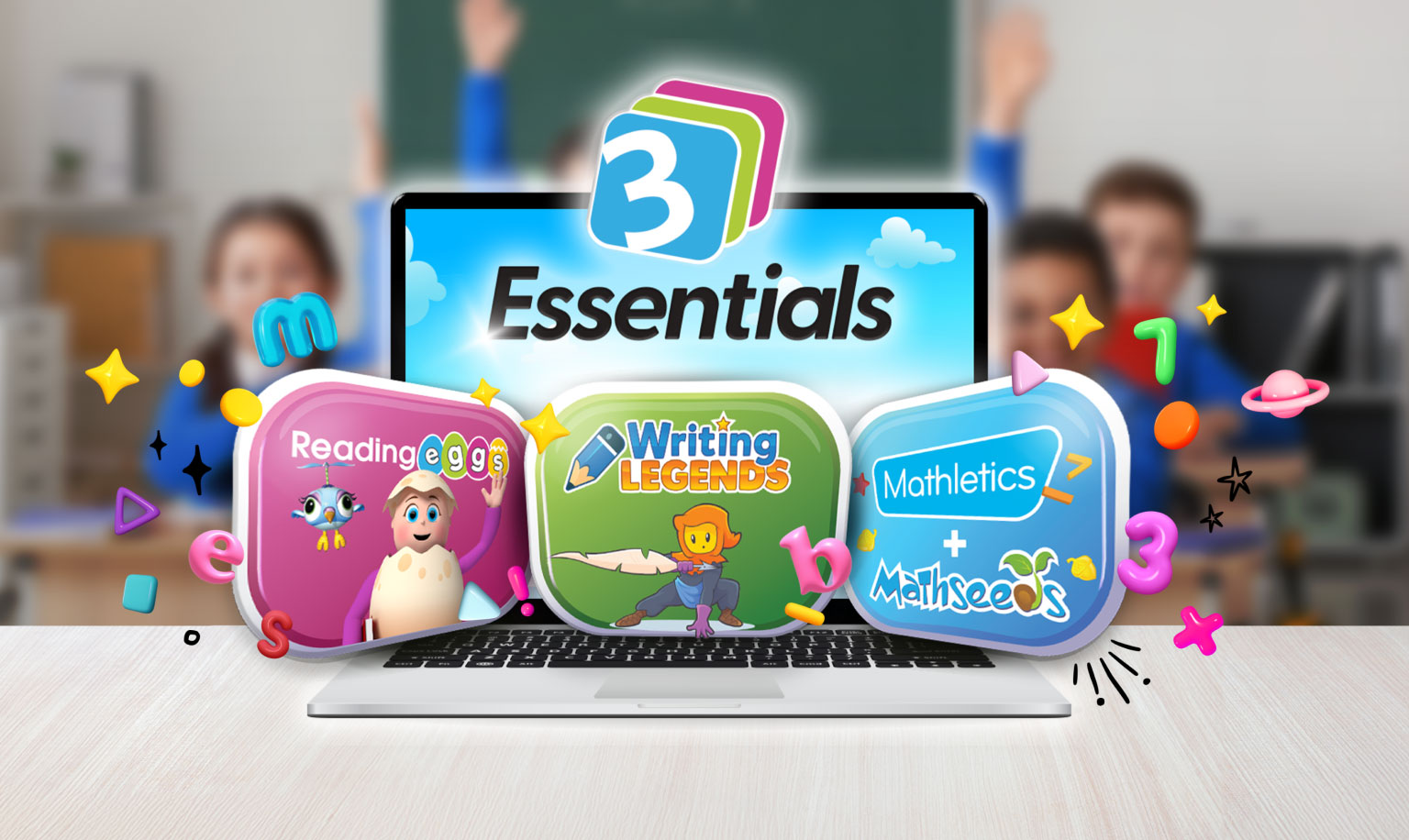
Prepping to teach multiplication can leave you more confused than your students.
But teaching multiplication doesn’t have to be difficult. It just requires you to break it down step by step.
Here’s a five-step method for teaching multiplication that will give your students confidence, and you some easy lesson plans.
Step 1: Start with physical manipulatives
Countable manipulatives turn multiplication into a hands-on concept. Any small tokens will do (buttons, blobs of modelling clay, cut-outs, bottle caps).
To make it easier to grasp, use the following strategies:
Group objects into sets
Let’s assume you’re working with the sum 3 × 4.
Have students group their manipulatives into three clearly separated blocks of four either by drawing three circles around them or placing them into three separate boxes.
This allows them to visualise the underlying formula of any multiplication question: x lots of a given number y equals a total number z.
Use an array
Sticking with 3 × 4, have students order their manipulatives into three rows each containing four pieces. This arrangement is an array. Students can then number these consecutively to discover that the three rows of four make eight – not six, as they might assume from an addition problem using the same digits.
Step 2: Introduce skip counting
Once they’ve got the hang of arranging their manipulatives and counting them out, ease students into skip counting (counting in lots of a given number).
Arrays or sets are still helpful. Now that they know each row or set contains a given number of units, they can start adding them together to reach an answer more quickly.
So the problem 3 × 4 becomes:
4
4 + 4 = 8
8 + 4 = 12
They can also practice skip counting by lots of two using their fingers.
Step 3: Highlight the commutative property
The commutative property of multiplication is the ability to reverse a sum and still get the same result. That’s why 3 x 4 and 4 x 3 both equal 12.
If students understand the commutative property, they’ll be able to handle multiplication tasks much more flexibly. They’ll also have an easier time memorising their tables, because learning one fact means you also learn its reverse.
You can teach this concept with a brain teaser: have students create a 3 x 4 array by arranging manipulatives on a piece of paper, then challenge them to create a 4 × 3 array without moving any of them.
You might have to drop a few hints, but they’ll soon realise all they need to do is rotate the paper ninety degrees. The array is exactly the same, only the other way around.
Step 4: Drill and practice multiplication facts
Once they understand the concept of multiplication, it’s time for students to memorise the facts – all the way up to their 12 times tables.
Start with the easy ones:
- Any number multiplied by one remains the same.
- Any number multiplied by two is just that number plus itself.
- Any number multiplied by 10 gets a zero on the end.
- Any number up to nine multiplied by 11 is the same digit repeated twice.
That’s a good chunk of the 12 × 12 multiplication table that can be calculated with little effort. Don’t forget to remind students of the commutative property, too – all these easy facts hold true when the numbers are reversed!
Use drill and practice strategies to commit the other multiplication tables to memory. Try using:
Quizzes
These could be set up as engaging, game show style competitions – but remember to make them inclusive for learners who might need extra support. Consider using prizes as a bit of extrinsic motivation.

Take part in World Maths Day, the world’s largest online mathematics competition!
I have… Who has…
In this game, students are given a card with a single number and a multiplication sentence underneath. They read out “I have [my number], who has x times y?”, and another student with the corresponding number must answer.
Online learning programs
Make multiplication practice more engaging with a program that drills the concept as part of a game, or captivating story. In Mathletics, for example, students solve multiplication problems as they travel through the outer space “multiverse”. The fun factor will keep them coming back for more!
Step 5: Work with words
It’s best to introduce word problems alongside fact fluency practice, so students get a sense of how multiplication translates to real scenarios.
The shift to words can be tricky, so ease students in by visualising the problem to begin with. Provide illustrations of the quantifiable aspects of the problem, or help students draw them themselves.
It also helps to use the schema approach:
Look at a collection of multiplication word problems side by side, and help students discover the underlying formula (schema) that links all of them. This allows them to look past the extraneous information in a word problem and recognise the familiar procedure at its heart.
If you’re tired of reinventing increasingly complex word problems, consider trialing an EdTech program that comes pre-loaded with them. Mathletics, for example, contains over 700 unique problem-solving and reasoning activities targeted to specific curriculum outcomes.
Need more help teaching mathematics?
Read up on strategies for teaching mental math, mathematics enrichment, and fun mathematics activities.
You can also check out our range of online math learning programs. They’ll take your students’ learning to the next level and foster a love of numbers that lasts a lifetime.

Teach mathematics fundamentals with confidence
Explore our engaging and award-winning mathematics programs today.










